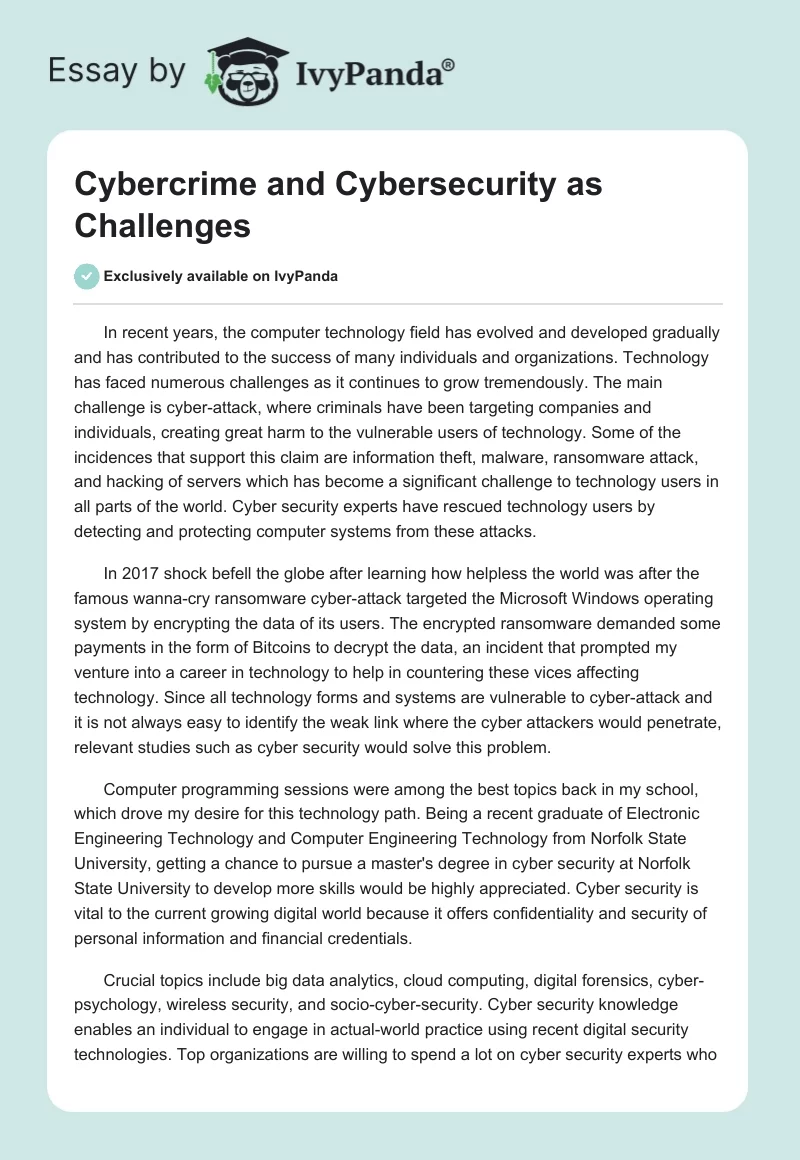In recent years, the computer technology field has evolved and developed gradually and has contributed to the success of many individuals and organizations. Technology has faced numerous challenges as it continues to grow tremendously. The main challenge is cyber-attack, where criminals have been targeting companies and individuals, creating great harm to the vulnerable users of technology. Some of the incidences that support this claim are information theft, malware, ransomware attack, and hacking of servers which has become a significant challenge to technology users in all parts of the world. Cyber security experts have rescued technology users by detecting and protecting computer systems from these attacks.
In 2017 shock befell the globe after learning how helpless the world was after the famous wanna-cry ransomware cyber-attack targeted the Microsoft Windows operating system by encrypting the data of its users. The encrypted ransomware demanded some payments in the form of Bitcoins to decrypt the data, an incident that prompted my venture into a career in technology to help in countering these vices affecting technology. Since all technology forms and systems are vulnerable to cyber-attack and it is not always easy to identify the weak link where the cyber attackers would penetrate, relevant studies such as cyber security would solve this problem.
Computer programming sessions were among the best topics back in my school, which drove my desire for this technology path. Being a recent graduate of Electronic Engineering Technology and Computer Engineering Technology from Norfolk State University, getting a chance to pursue a master’s degree in cyber security at Norfolk State University to develop more skills would be highly appreciated. Cyber security is vital to the current growing digital world because it offers confidentiality and security of personal information and financial credentials.
Crucial topics include big data analytics, cloud computing, digital forensics, cyber-psychology, wireless security, and socio-cyber-security. Cyber security knowledge enables an individual to engage in actual-world practice using recent digital security technologies. Top organizations are willing to spend a lot on cyber security experts who can protect their data from being vulnerable, taking a course in cyber security very relevant and marketable with good job security.
The masters in cyber security will enhance the best ways to secure networks and information systems by intrusion detection and detection of ordinary events. One will also learn the defensive cyber security technologies and techniques used in modern organizations to protect systems data and achieve Knowledge of the maintenance and design of reliable and safe information systems. It will also be possible to identify the human factors that compromise a network and computer security.
This program will also enlighten on the legal, technical, policy, and dimensional aspects of network security, computer systems security, and information security. Principles of network security design and operation and those of computer networks, including security assessments, design fundamentals, and incident response, will be achieved. It will also involve auditing and testing knowledge and the standard penetration testing methodology, Technical aspects of networks, computer and information system security, and the techniques related to authentication, access control auditing, and secure communication. These skills gained from the cyber security course will make one fit in various careers: security architect, Chief information security officer, security assessor, and security manager. Occupations such as Security director, security engineer, and information security consultant also require cybersecurity expertise and will be very important in the future dynamic digital world.


